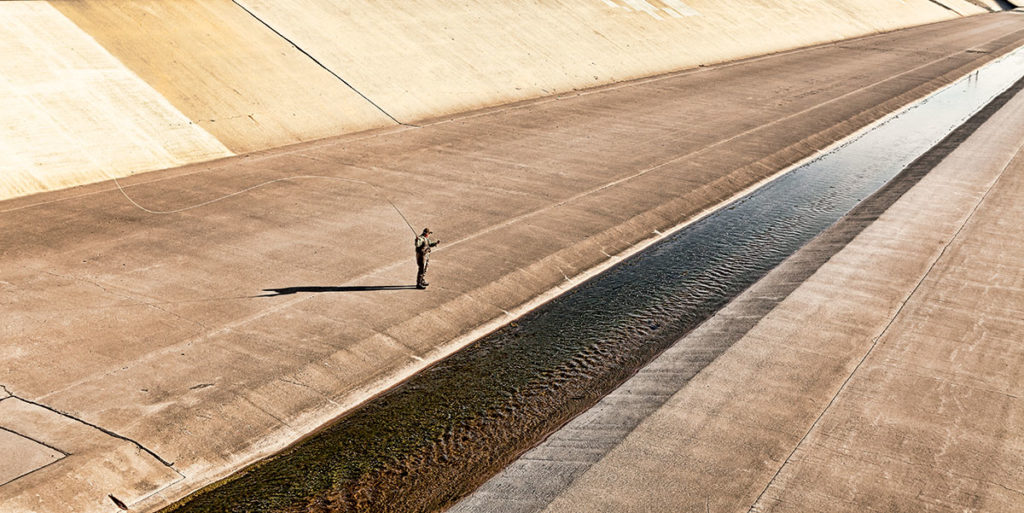
On Dec. 7, in one of his first journal entries, Brewer was awestruck by the beauty of the L.A. basin, which seemed to lack one resource only:
“Here is a great plain, or rather a gentle slope, from the Pacific to the mountains. We are on the plain about twenty miles from the sea and fifteen from the mountains, a most lovely locality; all that is wanted naturally to make it a paradise is water, more water … The weather is soft and balmy — no winter, but a perpetual spring and summer. Such is Los Angeles, a place where ‘every prospect pleases and only man is vile.’ ”
Brewer soon encounters L.A.’s natural water: He had arrived in rainy season, the rainiest in 11 years. In the next two months, Brewer’s team is pummeled by sudden deluges, surging streams and rising rivers. Supplies are washed away; nearby, men die. Today, Brewer’s journal — “Up and Down California in 1860 – 1864: The Journal of William H. Brewer” — is a record of the power of California’s greatest and most unpredictable resource: water.
Joe Haworth ’66 says L.A.’s water is still something of a mixed blessing. A water engineering specialist, Haworth worked for three decades in California’s water industry. L.A. water comes naturally in floods, Haworth says. “Floods are good because land gets replenished, but they’re bad because the floods are dangerous, sudden and unpredictable.”
Control, therefore, Haworth says, sums up most of the region’s water-use history: “getting water out of the basin — channelizing it — to make sure it didn’t harm development plans.” Corralling L.A.’s wild, sporadic waters in concretized rivers helped make economic development predictable, thus possible. The greatest example? The L.A. Aqueduct — “223 miles of canals, conduits, tunnels, flumes, penstocks, tailraces and siphons,” as historian Kevin Starr describes it. A century ago, on Nov. 5, 1913, the aqueduct first delivered water to the San Fernando Valley, and its builder may be the most influential person in Southern California history: William Mulholland, a water engineer.
If you ask Haworth the single most important thing to understand about water in Southern California, he answers, “Think of it as being as valuable as oil, except it’s a staple of life.”
Joseph Wakelee-Lynch is editor LMU Magazine. He is also host of “Off Press,” the podcast of LMU Magazine. You can find other writings of his at his Editor’s Blog. Follow him on Twitter @jwlmageditor.
